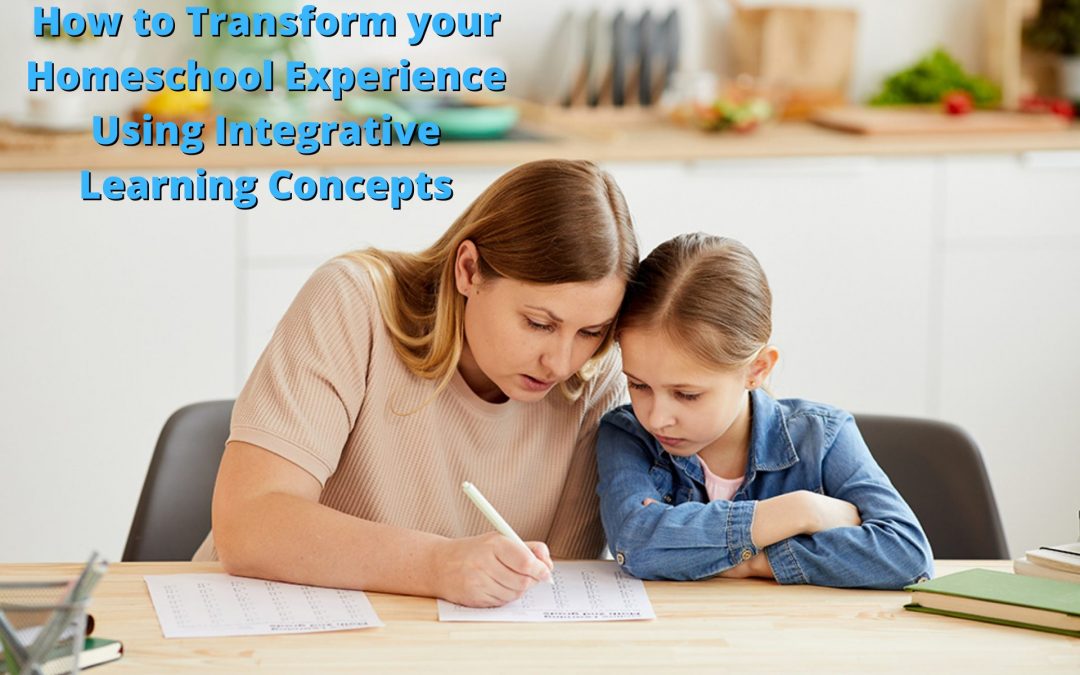A MODEL FOR TODAYS’ HOME SCHOOL
Integrative learning as a K to 12 teaching model is not a new idea. According to the blog site found at https://www.studiesweekly.com/blog/integrated-learning/, “integrated learning has been around for decades, but it is especially appropriate for today’s students, who need essential skills to analyze and apply learning from diverse perspectives to real-world problems.”
Sound familiar? Integrated learning models share some characteristics with the ideas of “context-based learning” or “inquiry-based learning,” in that all three approaches depend to some extent on allowing the student the space to question and interact with the educational materials presented to them. All three provide opportunity for students to discover new facts and interesting details that may not be apparent in textbook presentations of learning materials.
INTEGRATIVE/CONTEXT-BASED/INQUIRY-BASED LEARNING DEFINED
Context-Based Learning: This is a learning model that requires students to apply what they are learning to real-world experiences and situations. Kids who are shown the “real world” meaning and application of what they are being asked to learn will likely show a natural curiosity for the content and will be much more likely to achieve academic success.
Inquiry-Based Learning: The student’s role in the learning process is the most important part of inquiry-based leaning. “Rather than the teacher telling students what they need to know, students are encouraged to explore the materials, as questions and share ideas.” This learning method “uses different approaches to learning, including small-group discussion and guided learning.” The entire point is that students don’t depend entirely on memorizing facts, they learn by doing.
Integrative Learning: This learning approach helps K to 12 students make connections between concepts learned in multiple subject areas. “Integrated learning is the process of making connections among concepts and experiences so that information and skills can be applied to novel and complex issues or challenges.” The primary direction is to assist students in understanding, in a cross-topical way, issues and contradictory points of view.
( https://www.ithaca.edu/academics/integrative-core-curriculum/what-integrative-learning)
THE HOMESCHOOL TEACHER’S ROLE IN INTEGRATED LEARNING
In many ways, integrative, context-based and inquiry-based learning are similar and linked teaching models. But what is the role of the homeschool teacher in applying these concepts to their daily curriculums? To put it simply, “the educator’s new role now, in the Internet age is to help learners make connections between concepts, and relate them to their own experiences, and the real world.” Students must be able to understand how skills taught in one class can be applied in another. (https://study.com/academy/topic/integrated-learning-in-the-classroom.html )
As an experienced homeschool teacher, it’s easy to see that a model that requires students to apply what they’re learning to real-world experiences, is very much linked to the student’s need to explore ideas and “learn by doing.” Both directions will inevitably lead the homeschool teacher to wanting students to “make connections among concepts and experiences” and gives the teacher the opportunity to interweave all learning areas.
Creating a homeschool curriculum that uses integrated learning to interweave all areas of learning requires the use of three basic components:
- Vision – It’s important to be clear about what your goal is in terms of your students “producing high quality work at all levels.” This is the time to “determine learning objectives, grade level expectations and other measures that clearly indicate [your] vision of the learning environment.”
- Support – Once your integrative curriculum is ready to be applied to the day-to-day academics in your classroom, it might not be a bad idea to get some outside support. Run what you have created by other teachers, home school parents, a local home school co-op or even local school administrators for purposes of helpful input and constructive criticism.
- Rigor – This is a term applied to the idea of creating challenging, high level curriculum for homeschool student(s). “When subjects like math, science, language arts and technology set high standards and require students to use high level thinking skills, the curriculum is more successful, and students have more knowledge of the content. Additionally, a rigorous focus on exploratory and technical courses, like the arts and foreign languages, allows students to find subject matter of interest and increases their overall success.” (https://study.com/academy/lesson/characteristics-of-an-integrated-learning-culture.html )
AN INTEGRATIVE LEARNING EXAMPLE
The website “edshelf” is a free collection of websites, mobile apps, desktop programs and electronic programs for teaching and learning. The service was designed to be used for “Anyone who is educating tutors, coaches, homeschoolers, students, or self-motivated learners.”
A great example of concept-based integrative learning is offered at https://edshelf.com. The example offered is based on the concept of TIME. “The learning plan was developed based on students’ learning needs and the tools were selected to meet these needs. Categories related to time include, time lapse (photography), managing time (self-management), telling the time, timing in music, physics (time & space), and history.” Some associated learning skills include:
- Reading
- Writing
- Collaboration
- Key ideas
- Critical thinking
- Thinking as a scientist
- Thinking as a mathematician
- Thinking as an author
- Etc.
For more help developing an integrative learning module based on the concept of TIME, visit: https://edshelf.com/shelf/3jkkchf-an-integrated-learning-plan/.
MAKING INTEGRATIVE LEARNING HAPPEN IN YOUR HOMESCHOOL
If you’re looking for help in creating an integrated curriculum for your homeschool, the Nebraska Department of Education published a useful paper entitled “Integrated Curriculum in the Primary Program.” (https://www.education.ne.gov/wp-content/uploads/2017/07/IC.pdf ). The paper concludes that:
“Planning for an integrated curriculum begins with a consideration of children’s needs, interests, questions, prior knowledge and experiences.”
“An integrated program includes:
- Experiences to develop children’s attitudes, skills, and knowledge,
- Experiences to help the child make connections across the curriculum,
- Activities that provide for a range of abilities,
- Activities that are both teacher-initiated ad directed and child-initiated and directed,
- Activities related to the child’s individual experiences,
- Opportunities for critical and creative thinking,
- Teacher and student self-assessment, and
- Opportunities to experience learning as a meaningful whole.”

